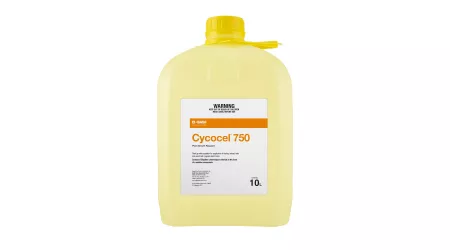Key benefits
- Complements earlier Cycocel application in barley
- Earlier application maximises lodging control
- Spray later at the higher rate if straw and neck break pressure is high
How it works
Terpal® is mainly taken up through the green parts of plants. Terpal should only be applied to vigorously growing crops which have an adequate supply of nutrients and moisture, and are free from any stress prior to and following treatment. Optimum results are obtained when Terpal is applied during the recommended stages of crop development. See Terpal label for recommended application stages.
The main effect is to shorten and thicken the stem between internodes on the parts undergoing stem elongation at, or following, treatment. Early treatments provide the greatest protection against basal lodging and later treatments are more effective at reducing straw and neck break.
Terpal is suited for application by ground or aerial spraying.
Questions and Answers from the Field
-
What is the role of plant bioregulators?
Plant bioregulators, such as BASF’s Terpal, a plant growth regulator, help in modulating plant growth and development. Terpal shortens and strengthens the stem between internodes, enhancing the resistance of vigorous crops to lodging and facilitating a higher yield.
-
What is the active ingredient in Terpal?
The active ingredients in Terpal are Mepiquat chloride (305 g/L) and Chlorethephon (155 g/L).
-
How do you use a plant growth regulator?
Plant growth regulators like BASF’s Terpal are typically applied to vigorously growing crops with an adequate supply of nutrients and moisture. Terpal is applied during specific stages of crop development and can be administered through ground or aerial spraying for optimal results.
-
What does lodging mean in plants?
Lodging in plants refers to the bending or laying down of crops, typically due to factors like strong winds or heavy rain. It can impact yield and crop quality. BASF’s Terpal Plant Growth Regulator helps in preventing lodging by shortening and thickening the stem.



